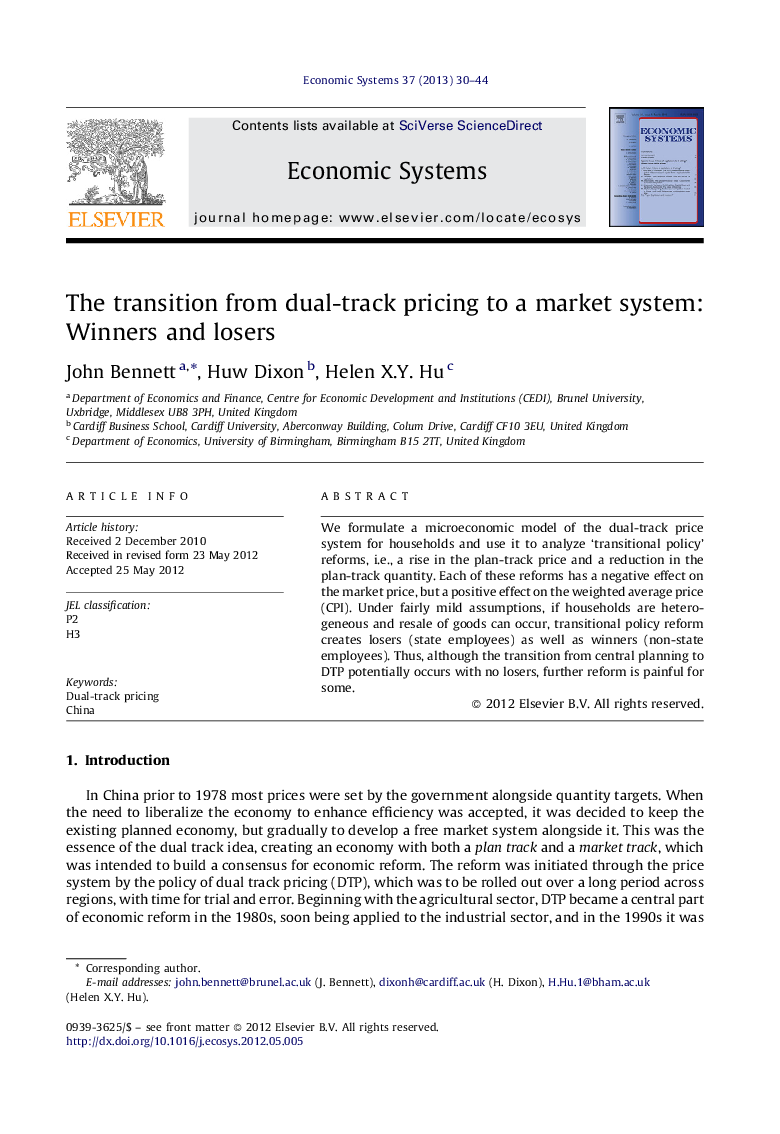| Article ID | Journal | Published Year | Pages | File Type |
|---|---|---|---|---|
| 5056603 | Economic Systems | 2013 | 15 Pages |
We formulate a microeconomic model of the dual-track price system for households and use it to analyze 'transitional policy' reforms, i.e., a rise in the plan-track price and a reduction in the plan-track quantity. Each of these reforms has a negative effect on the market price, but a positive effect on the weighted average price (CPI). Under fairly mild assumptions, if households are heterogeneous and resale of goods can occur, transitional policy reform creates losers (state employees) as well as winners (non-state employees). Thus, although the transition from central planning to DTP potentially occurs with no losers, further reform is painful for some.
⺠A rise in the dual-track price or fall in plan-track quantity has a negative effect on the market price. ⺠But these 'transitional reforms' have a positive effect on the weighted average price (CPI). ⺠These reforms create losers (state employees) as well as winners (non-state employees). ⺠The latter stages of Chinese reform are therefore painful for some.
